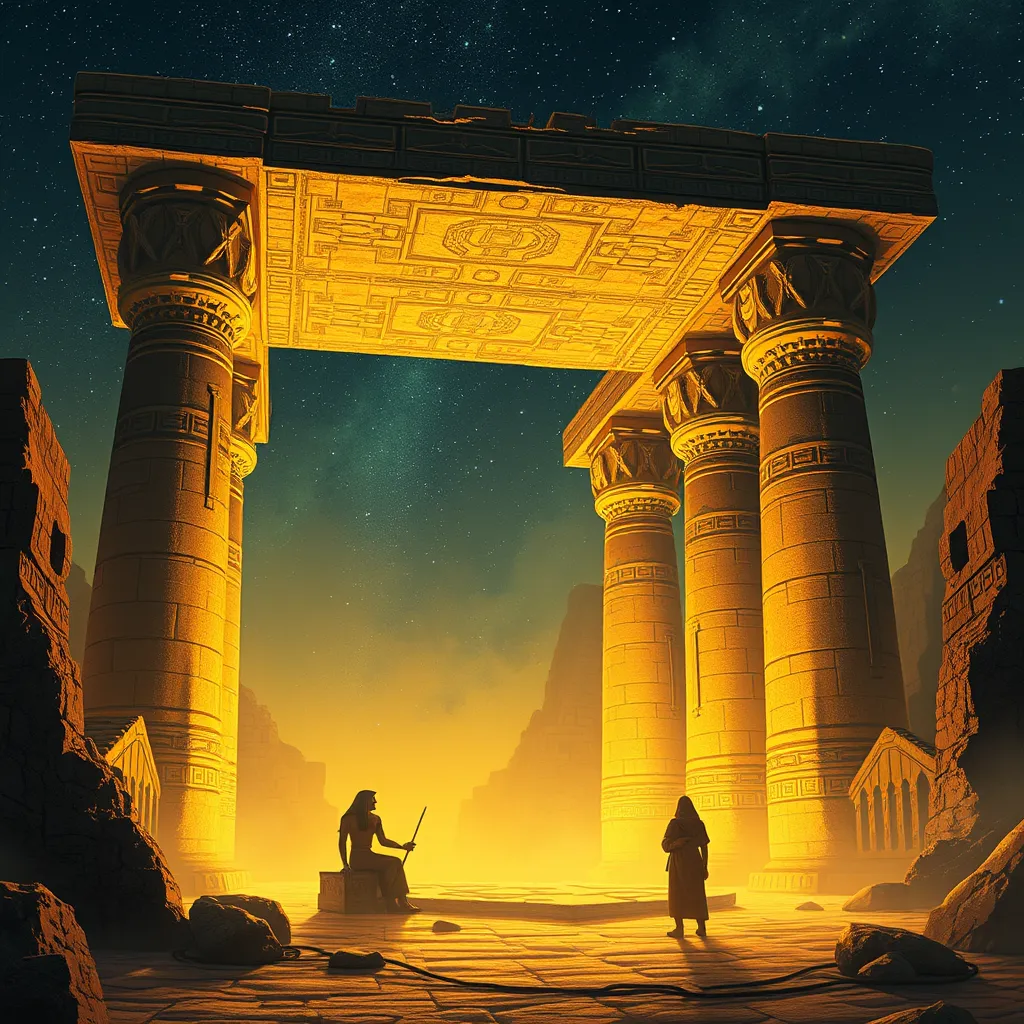The Duat: A Chronicle of the Afterlife
I. Introduction to the Duat
The Duat, often referred to as the Egyptian underworld, holds a paramount place in ancient Egyptian belief systems. It is not merely a realm of the dead but a complex landscape rich with meaning and significance. The ancient Egyptians viewed the afterlife as a continuation of life on earth, a place where the deceased would navigate trials to achieve immortality.
In Egyptian culture, the afterlife was integral to their worldview. The concept of the Duat provided a framework for understanding death, resurrection, and eternal life. It reinforced the importance of moral living and the belief in divine judgment, thus shaping their religious practices and societal norms.
II. The Concept of the Duat
The Duat is depicted as a vast, shadowy realm that exists beneath the surface of the earth. It is a place filled with both wonders and dangers, where the souls of the deceased embark on a transformative journey. The landscape of the Duat is often characterized by rivers, fields, and dark caverns, each representing different aspects of the afterlife.
In Egyptian art and literature, the Duat is rich with symbolism. It is often illustrated with vibrant colors and intricate designs, showcasing the duality of life and death. The imagery serves not only to depict the afterlife but also to reinforce the cultural values surrounding death and rebirth.
III. The Journey Through the Duat
The transition from life to the Duat begins with death. The deceased is believed to embark on a journey that leads them through various challenges and trials. This journey is crucial for determining the fate of the soul in the afterlife.
- Key Deities Involved: The journey is overseen by several deities, including:
- Osiris: The god of the afterlife, who judges the souls of the deceased.
- Anubis: The god of mummification and the protector of graves, who guides the souls through the Duat.
One of the most significant events during this journey is the “Weighing of the Heart” ceremony. In this ritual, the heart of the deceased is weighed against the feather of Ma’at, representing truth and justice. If the heart is lighter than the feather, the soul is deemed worthy and granted passage to the Field of Reeds; if not, it faces dire consequences.
IV. The Geography of the Duat
The Duat is comprised of various regions and landscapes, each symbolizing different aspects of the afterlife experience. Mapping the Duat reveals a complex structure filled with diverse environments.
- Notable Locations:
- The Field of Reeds: A paradise where the worthy enjoy eternal life.
- The Hall of Judgement: The site where the Weighing of the Heart takes place.
- The Lake of Fire: A place of punishment for the unworthy.
Each of these locations plays a critical role in the journey of the soul, guiding it towards its ultimate fate.
V. Trials and Challenges in the Duat
As souls traverse the Duat, they encounter various trials and challenges. These obstacles are often depicted as mythological creatures and treacherous landscapes.
- Mythological Creatures: Souls may face dangers from:
- Serpents: Often representing chaos and danger.
- Demons: Sent to test the resolve and purity of the soul.
To aid in this perilous journey, the deceased relied on spells and texts, most notably the Book of the Dead. This collection of spells was created to guide and protect the souls through the Duat, ensuring they could overcome the various challenges they faced.
VI. The Deities of the Duat
The Duat is populated by numerous gods and goddesses, each playing a vital role in the afterlife. These deities are often depicted in tomb art and religious texts, serving as guides and guardians for the souls.
- Important Deities:
- Osiris: The chief deity of the Duat, overseeing the judgment of souls.
- Anubis: The guide of souls, ensuring safe passage through the underworld.
- Ma’at: The goddess of truth, whose feather is used in the judgment of hearts.
These deities embody the principles of order and justice, crucial for the deceased’s navigation through the complexities of the afterlife.
VII. The Duat in Egyptian Funerary Practices
To ensure a safe passage through the Duat, ancient Egyptians engaged in various funerary practices. These rituals were designed to honor the deceased and prepare them for their journey into the afterlife.
- Rituals and Burial Customs: Key practices included:
- The mummification process, preserving the body for the afterlife.
- Funeral rites that included offerings and prayers to assist the deceased.
Artifacts such as amulets, canopic jars, and the aforementioned Book of the Dead were included in tombs, providing protection and guidance for the soul in the Duat.
VIII. The Legacy of the Duat in Modern Culture
The concept of the Duat continues to influence contemporary interpretations of the afterlife. Its rich symbolism and mythology have left an indelible mark on literature, film, and popular culture.
- Influence in Modern Culture:
- References in literature, such as novels and poetry, exploring themes of death and the afterlife.
- Depictions in films that incorporate ancient Egyptian mythology and its mysteries.
- Inspiration for video games and art that draw from the imagery and symbolism of the Duat.
The Duat represents not just a belief system of ancient Egypt but a timeless exploration of the human condition, the fear of death, and the hope for immortality.




